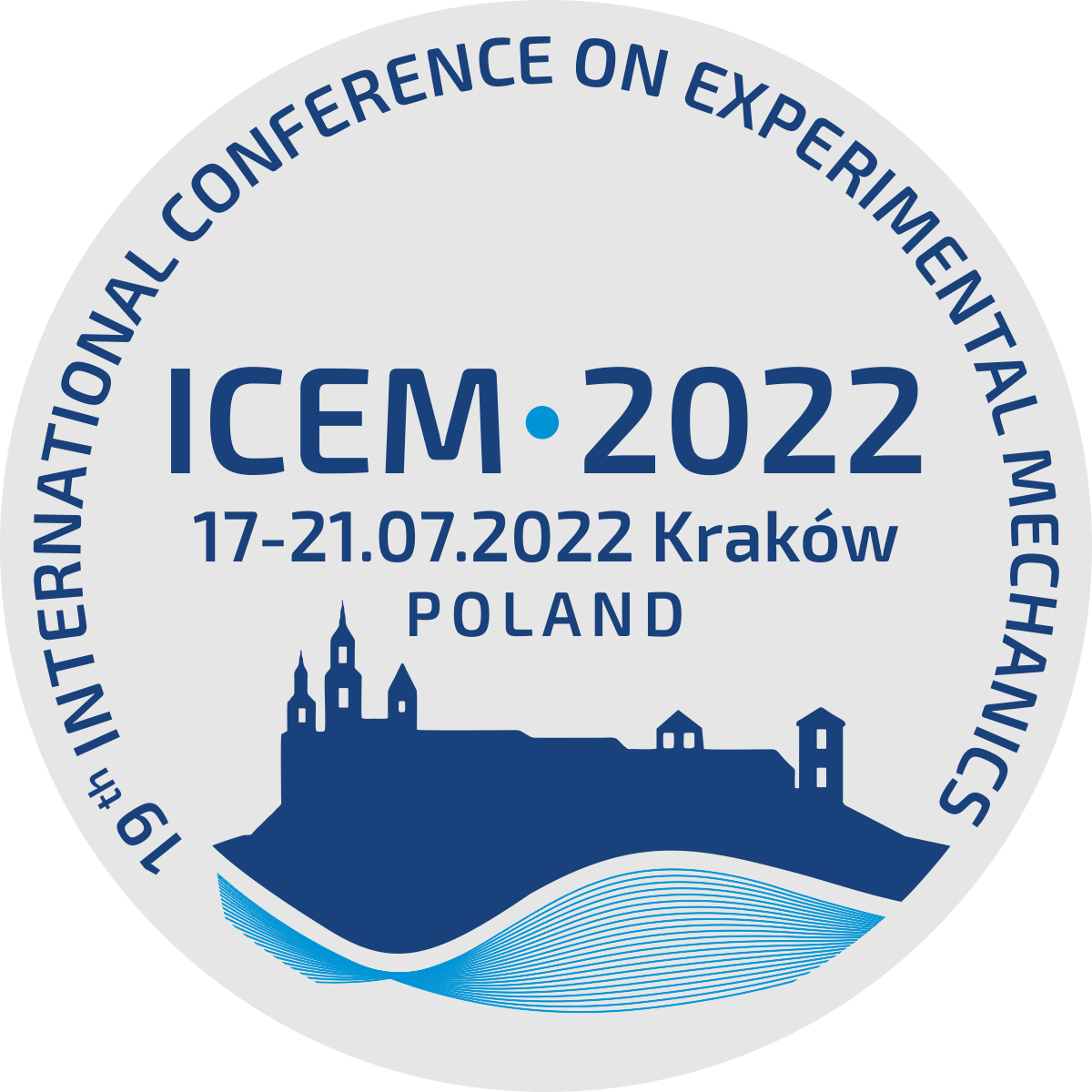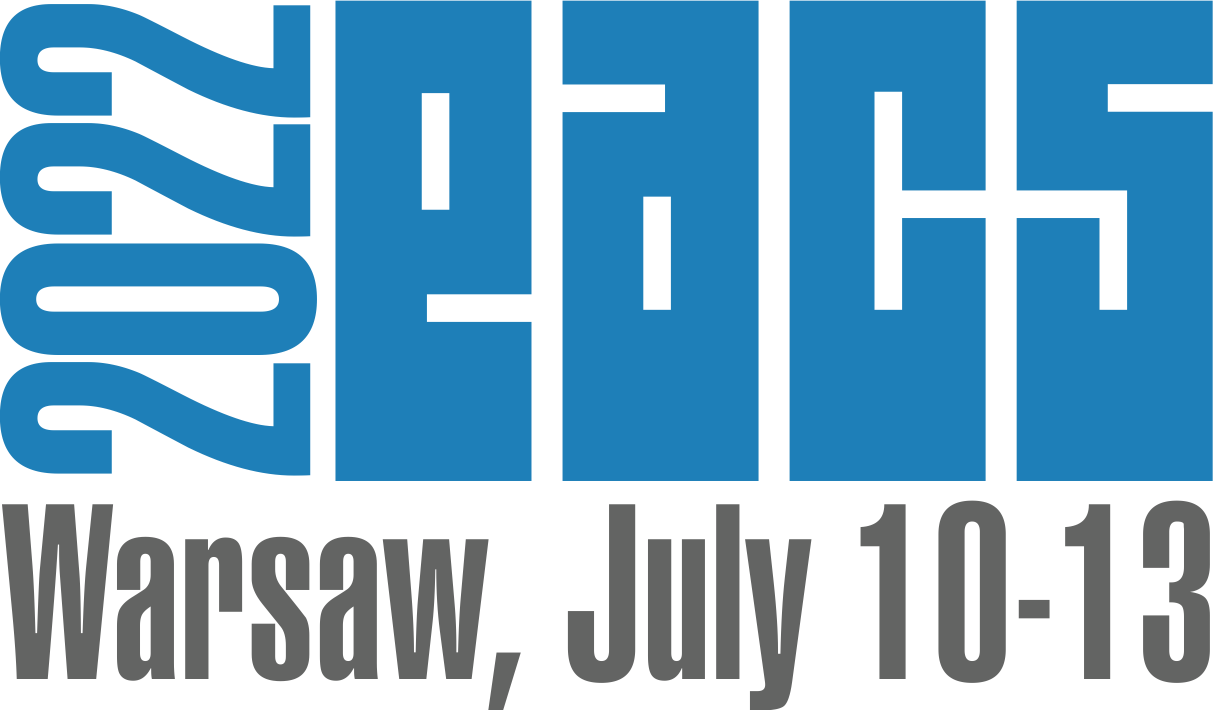| 1. |
Niedzielczyk M., Galland M.-A.♦, Zieliński T.G., An acoustic material with tortuous slits filled with fibres,
ISMA2024 / USD2024, 31st International Conference on Noise and Vibration Engineering / International Conference on
Uncertainty in Structural Dynamics, 2024-09-09/09-11, Leuven (BE), pp.323-336, 2024 Abstract:
The work presents a comprehensive approach to the design and modelling of acoustic materials based on labyrinth structures filled with fibres. It has recently been shown that exceptionally favourable acoustic properties can be obtained in labyrinthine materials due to their extreme tortuosity. Such materials, typically produced by methods such as 3D printing, exhibit high sound absorption values at lower frequencies. The next step in the development of this type of acoustic treatment (explored here) involves introducing fibres into labyrinthine channels. Such acoustic composite designs can have a beneficial effect of shifting the absorption peak to even lower frequencies and also widening its efficiency range. Two samples of slotted labyrinth materials, designed using analytical acoustic modelling, were 3D printed, and their slits were filled with selected fibrous materials, such as biofibres, cotton wool, acrylic yarn, etc. They were tested in an impedance tube to confirm the predicted improvement, but also to show a dramatic change in sound absorption. Affiliations:
| Niedzielczyk M. | - | IPPT PAN | | Galland M.-A. | - | École Centrale de Lyon (FR) | | Zieliński T.G. | - | IPPT PAN |
|  |
| 2. |
Zielinski T.G., Opiela K.C., Dauchez N.♦, Boutin T.♦, Galland M.-.A.♦, Attenborough K.♦, Low frequency absorption by 3D printed materials having highly tortuous labyrinthine slits in impermeable or microporous skeletons,
10th Convention of the European Acoustics Association - Forum Acusticum 2023, 2023-09-11/09-15, Torino (IT), DOI: 10.61782/fa.2023.0342, pp.2275-2282, 2023 Abstract:
The low frequency peaks in the absorption spectra of layers of conventional porous materials correspond to quarter wavelength resonances and the peak frequencies are determined essentially by layer thickness. If the layer cannot be made thicker, the frequency of the peak can be lowered by increasing the tortuosity of the material. Modern additive manufacturing technologies enable exploration of pore network designs that have high tortuosity. This paper reports analytical models for pore structures consisting of geometrically complex labyrinthine networks of narrow slits resembling Greek meander patterns. These networks offer extremely high tortuosity in a non-porous solid skeleton. However, additional enhancement of the low frequency performance results from exploiting the dual porosity pressure diffusion effect by making the skeleton microporous with a significantly lower permeability than the tortuous network of slits. Analytical predictions are in good agreement with measurements made on two samples with the same tortuous slit pattern, but one has an impermeable skeleton 3D printed from a photopolymer resin and the other has a microporous skeleton 3D printed from a gypsum powder. Keywords:
sound absorption, high tortuosity, dual porosity, 3D printed materials Affiliations:
| Zielinski T.G. | - | IPPT PAN | | Opiela K.C. | - | IPPT PAN | | Dauchez N. | - | Sorbonne University Alliance (FR) | | Boutin T. | - | Sorbonne University Alliance (FR) | | Galland M.-.A. | - | École Centrale de Lyon (FR) | | Attenborough K. | - | The Open University (GB) |
|  |
| 3. |
Jamois A.♦, Dragna D.♦, Zieliński T.G., Galland M.-A.♦, Modélisation acoustique d’un matériau obtenu par fabrication additive placé en paroi d’un conduit,
CFA 2022, 16ème Congrès Français d’Acoustique, 2022-04-11/04-15, Marseille (FR), pp.1-7, 2022 Abstract:
L’objectif de cette étude est de modéliser et de caractériser le comportement de matériaux réalisés en impression 3D lorsqu’ils sont placés en paroi d’un conduit. Le matériau considéré présente une structure périodique dont la cellule de base comporte une sphère reliée aux sphères des autres cellules par des canaux cylindriques. Le squelette rigide du matériau permet de le modéliser comme un Fluide Équivalent. Quand le matériau est placé en paroi de conduit, la modélisation par son impédance de surface n’est plus suffisante et la propagation dans le matériau doit être prise en compte. Trois modélisations du matériau sont étudiées. Les deux premières s’appuient sur une description macroscopique au moyen d’un Fluide Équivalent. Dans la première, il est décrit par ses fonctions caractéristiques dynamiques (densité et compressibilité), calculées au moyen d’un modèle numérique d’un tube de Kundt. Dans la seconde modélisation, les paramètres du modèle JCALP sont déduits par résolution des équations de Stokes, Laplace et Poisson pour une seule cellule du matériau. Le troisième modèle consiste à décrire le matériau dans sa globalité à l’échelle microscopique et à résoudre les équations de Navier-Stokes Linéarisées (NSL) dans le conduit et le matériau. Les résultats des trois modèles sont comparés en incidence normale et en paroi d’un conduit. Différentes techniques d’impression 3D ont été utilisées pour réaliser des échantillons, et montrent une variabilité importante des géométries effectivement réalisées et par suite des coefficients d’absorption mesurés en tube de Kundt. Les résultats d’expérimentations en paroi de conduit sont également comparés avec ceux de la modélisation. Affiliations:
| Jamois A. | - | other affiliation | | Dragna D. | - | other affiliation | | Zieliński T.G. | - | IPPT PAN | | Galland M.-A. | - | École Centrale de Lyon (FR) |
|  |
| 4. |
Zieliński T.G., Galland M.-A.♦, Analysis of wave propagation and absorption at normal and oblique incidence in poroelastic layers with active periodic inclusions,
e-FA2020, e-FORUM ACUSTICUM 2020, 2020-12-07/12-11, Lyon (FR), DOI: 10.48465/fa.2020.0541, pp.2825-2831, 2020 Abstract:
The paper presents numerical studies of wave propagation under normal and oblique incidence in sound-absorbing layers of poroelastic composites with active and passive inclusions embedded periodically along the composite layer surface. The purpose of active inclusions is to increase the mass-spring effect of passive inclusions attached to the viscoelastic skeleton of the poroelastic matrix of the composite in order to increase the dissipation of the energy of acoustic waves penetrating into such a layer of poroelastic composite. Finite element modelling is applied which includes the coupled models of Biot-Allard poroelasticity (for the poroelastic matrix), piezoelectricity and elastodynamics (for the active and passive inclusions, respectively), as well as the Helmholtz equation for the adjacent layer of air. The formulation based on the Floquet-Bloch theory is applied to allow for modelling of wave propagation at oblique incidence to the surface of the periodic composite layer. The actively exited piezoelectric inclusions may become additional (though secondary) sources for wave propagation. Therefore, a background pressure field in a wide adjacent air layer is used to simulate plane waves propagating from the specified direction, oblique or normal, onto the poroelastic layer surface, and a nonreflecting condition is applied on the external boundary of the air layer. Affiliations:
| Zieliński T.G. | - | IPPT PAN | | Galland M.-A. | - | École Centrale de Lyon (FR) |
|  |
| 5. |
Zieliński T.G., Galland M.-A.♦, Deckers E.♦, Influencing the wave-attenuating coupling of solid and fluid phases in poroelastic layers using piezoelectric inclusions and locally added masses,
ISMA 2018 / USD 2018, International Conference on Noise and Vibration Engineering / International Conference on Uncertainty in Structural Dynamics, 2018-09-17/09-19, Leuven (BE), pp.1195-1207, 2018 Abstract:
When airborne acoustic waves penetrate porous media their carrier becomes the air in pores, but also the solid skeleton - provided that it is sufficiently soft. Then, there is a coupled propagation of fluid-borne and solid-borne waves in a poroelastic medium. The coupling of fluid and solid phases of such media can be responsible for significantly better or weaker sound absorption in medium and lower frequency ranges. It has been observed that adding some well-localised small mass inclusions inside a poroelastic layer may improve its acoustic absorption in some medium frequency range, however, at the same time the absorption is usually decreased at some slightly higher frequencies. This situation can be improved by applying additionally an active approach using small piezoelectric inclusions which actively influence the vibrations of the solid skeleton with added masses, so that the interaction between the solid-borne and fluid-borne waves is always directed for a better mutual energy dissipation of the both types of waves. Affiliations:
| Zieliński T.G. | - | IPPT PAN | | Galland M.-A. | - | École Centrale de Lyon (FR) | | Deckers E. | - | Katholieke Universiteit Leuven (BE) |
|  |
| 6. |
Zieliński T.G., Galland M.A.♦, Ichchou M.N.♦, Further modeling and new results of active noise reduction using elasto-poroelastic panels,
ISMA 2006, International Conference on Noise and Vibration Engineering, 2006-09-18/09-20, Louvain (BE), Vol.1, pp.309-319, 2006 Abstract:
The paper presents further development in modeling of active elasto-poroelastic sandwich panels. In fact, a new design of a demi-sandwich panel is proposed and analysed. A numerical model of panel is implemented in COMSOL Multiphysics environment using the most fundamental but very flexible Weak Form PDE Mode. Various physical problems are modeled using Finite Element Method: the wave propagation in acoustic and poroelastic medium, the vibrations of elastic plate, the piezoelectric behavior of actuator. All these problems interact. in the examined application of active panel. The presented results of FE analysis and some analytical solutions prove the necessity of modeling the panel's interaction with an acoustic medium. Again, confirmed is the fact that an active control is necessary for lower resonances while for the higher frequencies the passive reduction of vibroacoustic transmission performed by a well-designed poroelastic layer is sufficient. Keywords:
Active sandiwch panels, Poroelasticity, Piezoelectricity, Vibroacoustics Affiliations:
| Zieliński T.G. | - | IPPT PAN | | Galland M.A. | - | École Centrale de Lyon (FR) | | Ichchou M.N. | - | École Centrale de Lyon (FR) |
|  |
| 7. |
Zieliński T.G.♦, Galland M.A.♦, Ichchou M.♦, Active reduction of vibroacoustic transmission using elasto-poroelastic sandwich panels and piezoelectric materials,
SAPEM'2005, Symposium on the Acoustics of Poro-Elastic Materials, 2005-12-07/12-09, Lyon (FR), pp.1-8, 2005 Abstract:
The paper addresses the issue of an active sandwich panel made of elastic faceplates and a poroelastic core. The panel is supposed to be active thanks to piezoelectric patches glued to the one of elastic layers. This piezoelectric actuator is used to excite the panel vibrations in the low frequency range with the aim to reduce the transmitted wave. A complete description of the sandwich behaviour is obtained using a finite element model implemented in FEMLAB environment. The poroelastic material is modeled using a recent formulation (by Atalla et al.) valid for harmonic oscillations, but the classical Biot formulation is also implemented. Coupling occurring between poroelastic material and plates, and between elastic plate and piezoelectric patches is fully considered. The achieved numerical model allows prediction of transmission coefficient for plane waves under normal incidence. Hence, some numerical experiments can be offered for multiple assembly configurations whose ultimate goal is to determine the best assembly and the best control strategy for reducing the transmission over a wide frequency range. Keywords:
Poroelacticity, Piezoelectricity, Active vibroacoustic panles Affiliations:
| Zieliński T.G. | - | other affiliation | | Galland M.A. | - | École Centrale de Lyon (FR) | | Ichchou M. | - | École Centrale de Lyon (FR) |
|  |






























